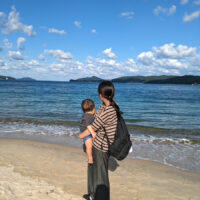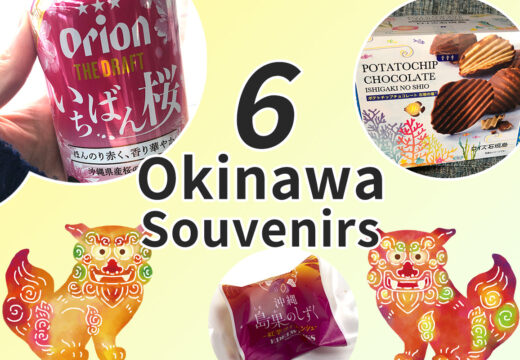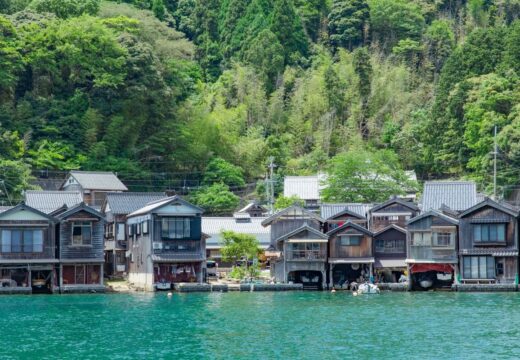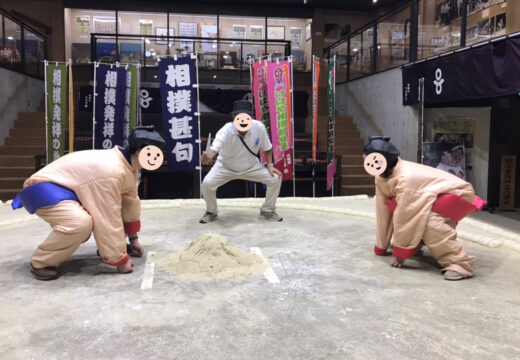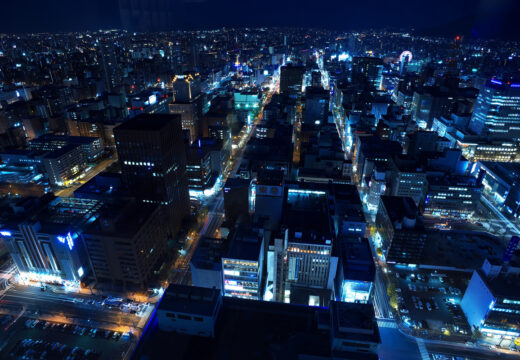Experience Awaji Ningyo Joruri, which boasts a history of over 500 years!
Category: Sightseeing

Awaji Island, a resort destination located within a two-hour drive from Osaka. The island offers a wealth of attractions in every category, including history, culture, cuisine, and nature. This time, we focused on Minami-Awaji City, located at the southernmost tip of Awaji Island, and visited some of its most popular spots!
First up, we introduce Awaji Island’s traditional performing art, Awaji Ningyo Joruri. We delve into the 500-year history and charm of Awaji Ningyo Joruri, and share a report from our backstage tour.
What is Awaji Ningyo Joruri?
To begin with, Ningyo Joruri is a traditional Japanese performing art that combines storytelling by a narrator (tayu) accompanied by shamisen music with puppet theater. Originating in Osaka, Ningyo Joruri Bunraku, registered as a UNESCO Intangible Cultural Heritage, may be familiar to some as “BUNRAKU.”

The origins of Awaji Ningyo Joruri can be traced back to the late Muromachi period, approximately 500 years ago. It is said that Hyakudayu, a puppeteer who served at Nishinomiya Shrine (Nishinomiya Ebisu, Nishinomiya City, Hyogo Prefecture), moved to Sanjo Village (now Sanjo, Minami-Awaji City) on Awaji Island and introduced puppet theater as a ritual to pray for a bountiful catch and safety at sea.
During the Edo period (1603-1868), Ningyo Joruri, which originated in the Kansai region (Kyoto, etc.), spread to Awaji Island. At its peak, there were over 40 puppet theaters on the island, and it became a popular form of entertainment for the general public.
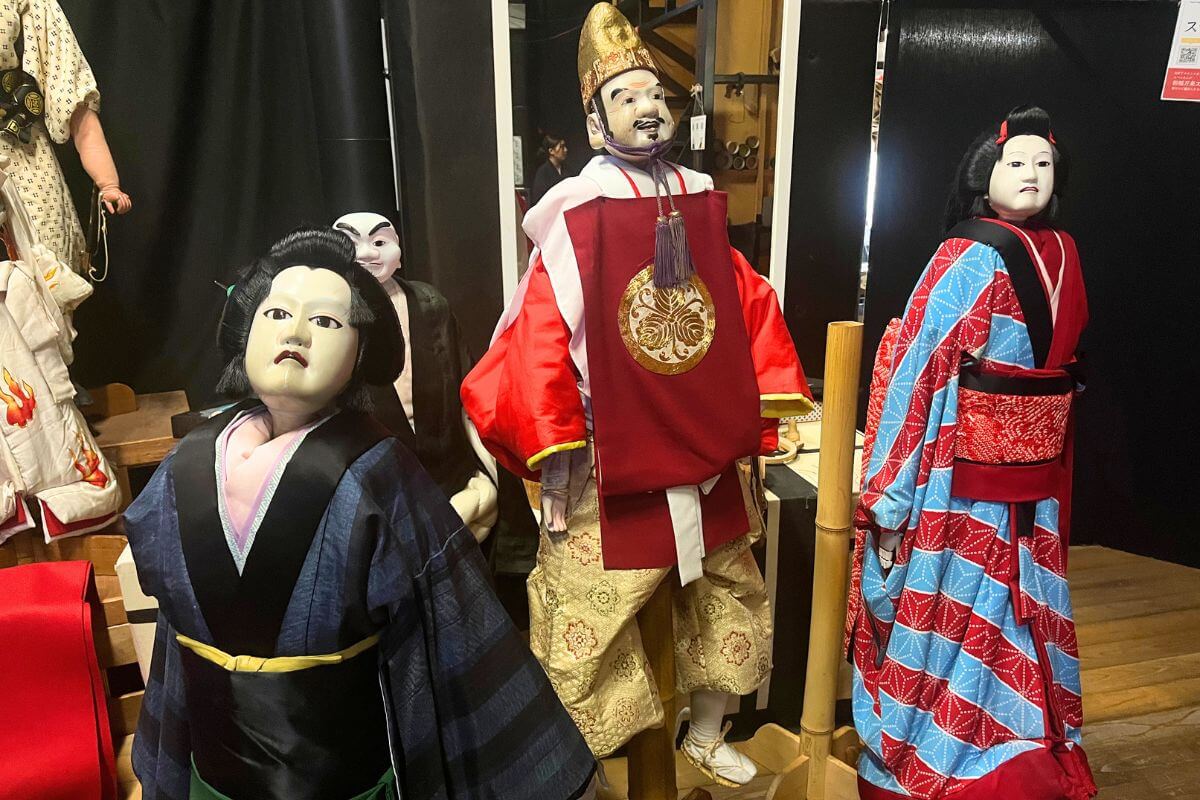
The most distinctive feature of Awaji Ningyo Joruri is that the puppets are larger than those used in Bunraku. The largest ones are 1.5 to 1.6 meters tall! This is because the puppets were made larger so that they could be easily seen during outdoor performances of Awaji Ningyo Joruri. Dynamic performances with large puppets and stage mechanisms are characteristic of Awaji’s unique and spectacular performances.
The only Awaji puppet theater on Awaji Island
Awaji Ningyo Joruri, which used to have many puppet theaters touring all over the country, now consists of only one theater, Awaji Ningyoza. Established in 1964 after inheriting the props and equipment of the Yoshida Denjiroza troupe, the Awaji Ningyoza performs four shows a day at its permanent venue in Minami-Awaji City.
It also conducts touring performances both domestically and internationally, as well as outreach lectures at elementary, middle, and high schools. To promote Awaji Ningyo Joruri, the troupe makes creative efforts such as preparing performances that are easy for beginners to understand and utilizing social media.
▲YouTube video introducing Awaji Ningyoza (English version)
How to enjoy Awaji Ningyoza
Now, let’s take a look at how to enjoy Awaji Ningyoza and the highlights of Awaji Ningyo Joruri.
1. Arrival at the venue

Awaji Ningyoza’s permanent theater is located right next to Fukura Port in Minami-Awaji City. Fukura Port is a popular destination for tourists as it is the departure point for the Naruto Strait whirlpool cruise. In addition, there is a highway bus terminal right in front of Awaji Ningyoza, making it easily accessible from places such as Kobe Sannomiya!
The colorful banners of Awaji Ningyoza fluttering in the sea breeze are a landmark.
On the first floor, there are photo spots such as lanterns and wall art of Ebisu, the god of fortune, perfect for taking commemorative photos.
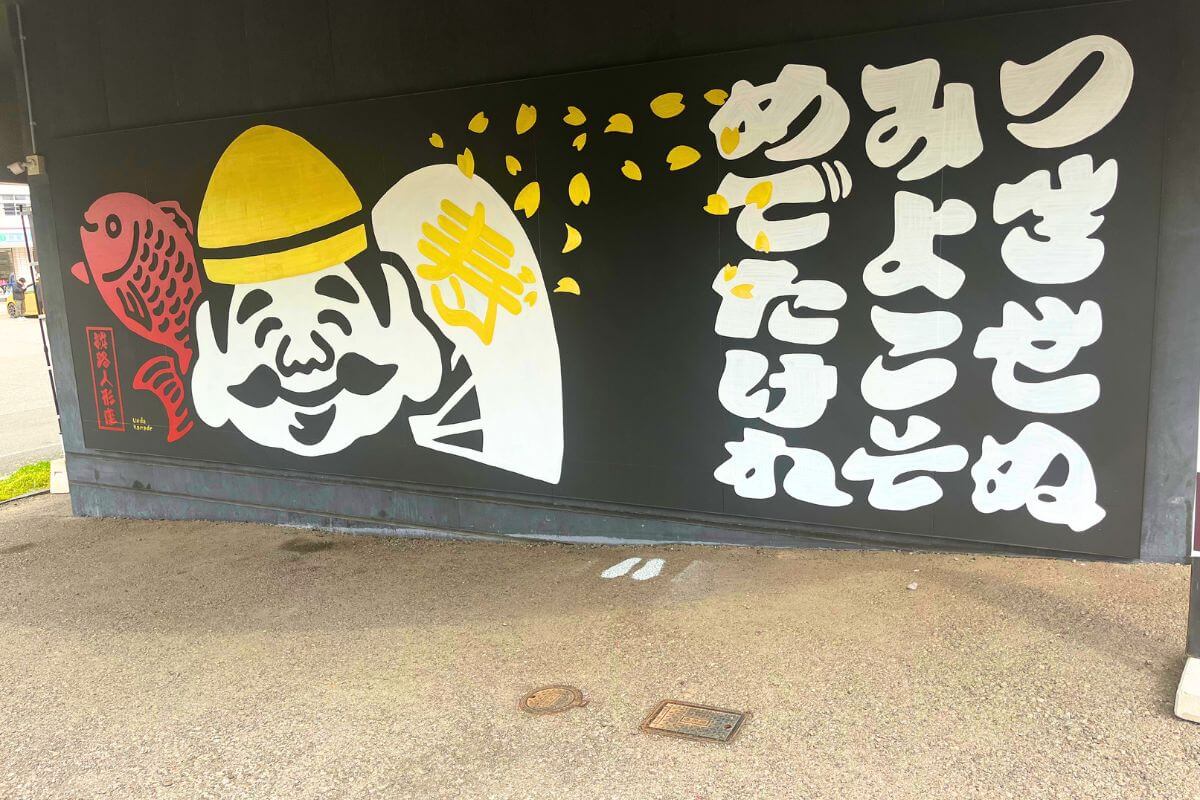
2. Purchasing tickets
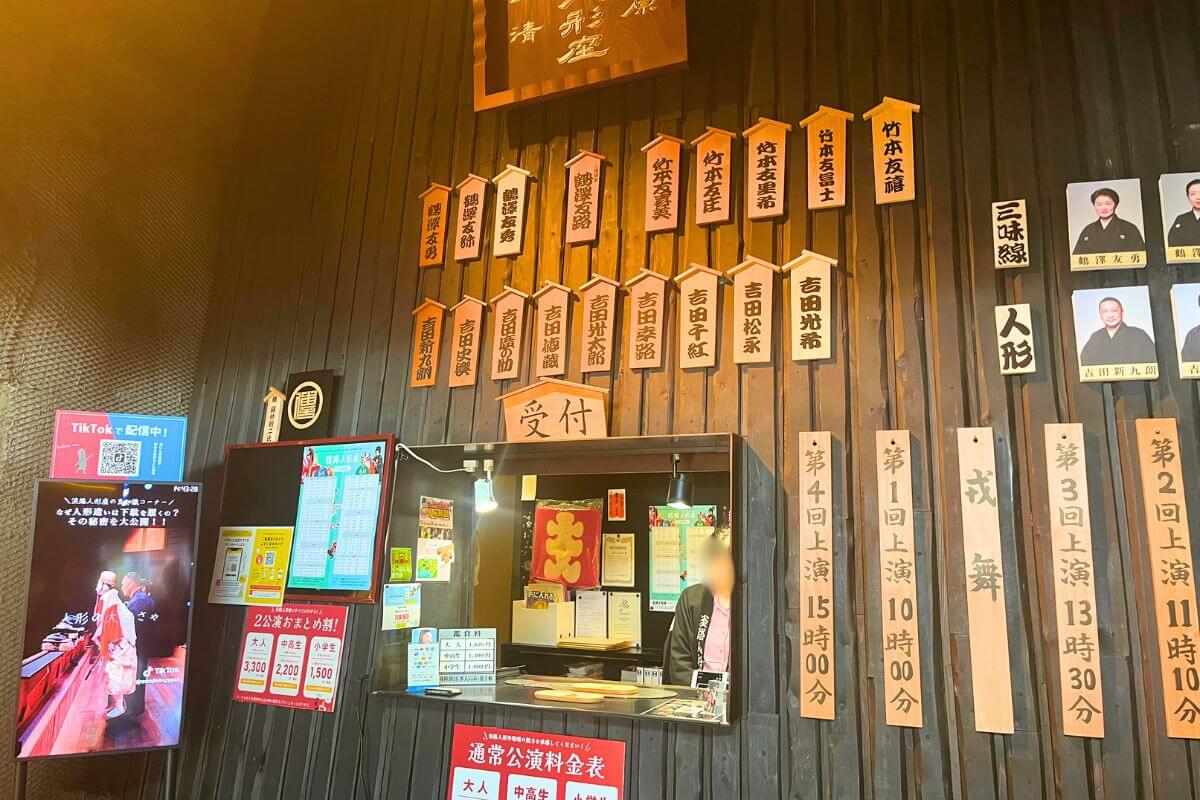
First, purchase your ticket at the reception desk on the second floor.
There are four performances per day: (1)10:00 a.m., (2)11:10 a.m., (3)1:30 p.m., and (4)3:00 p.m. Performances (1) and (4) mainly include a backstage tour (as of June 2025). The schedule for each performance is announced on a monthly basis, so it is recommended to check it in advance before visiting.
Kodawari Times visited the venue around 1:00 PM and was able to watch the 1:30 PM performance of “Yurutto Ningyo Joruri.”
3. Opening
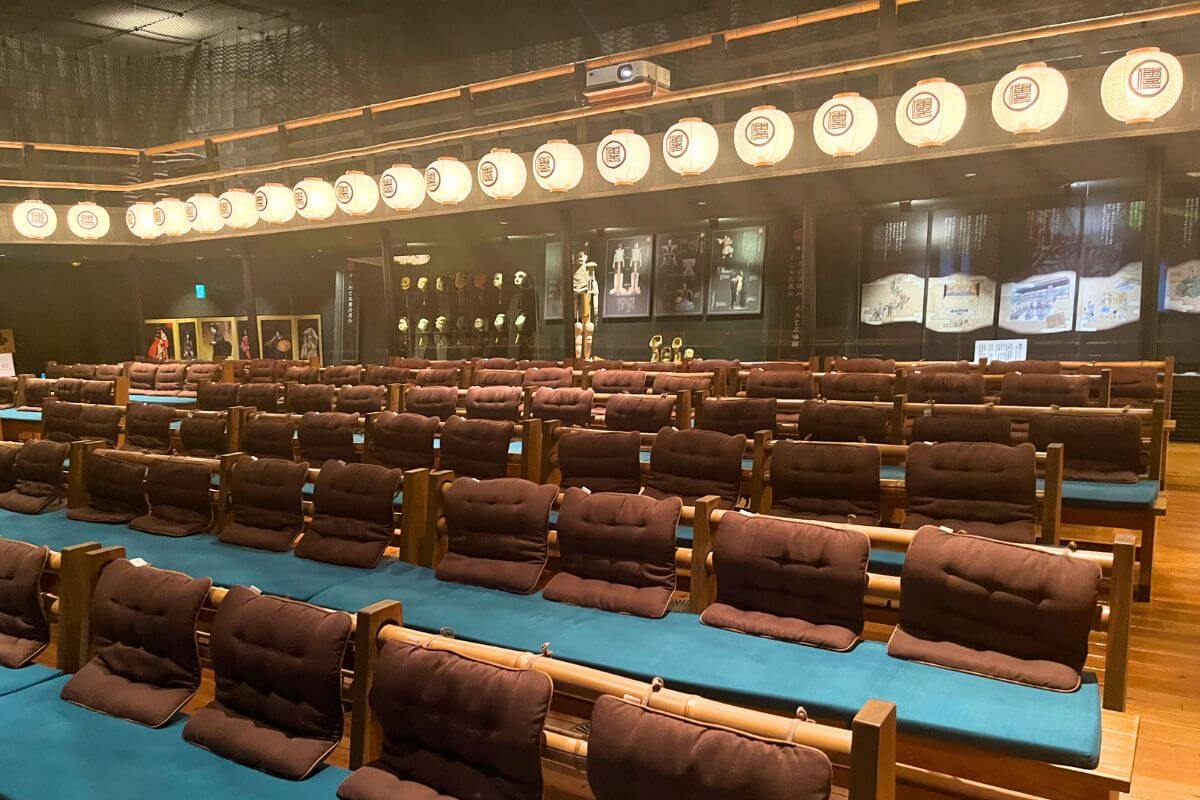
After purchasing your ticket, proceed to the theater located at the back right of the reception desk. Seating is unreserved, so you can sit wherever you like.
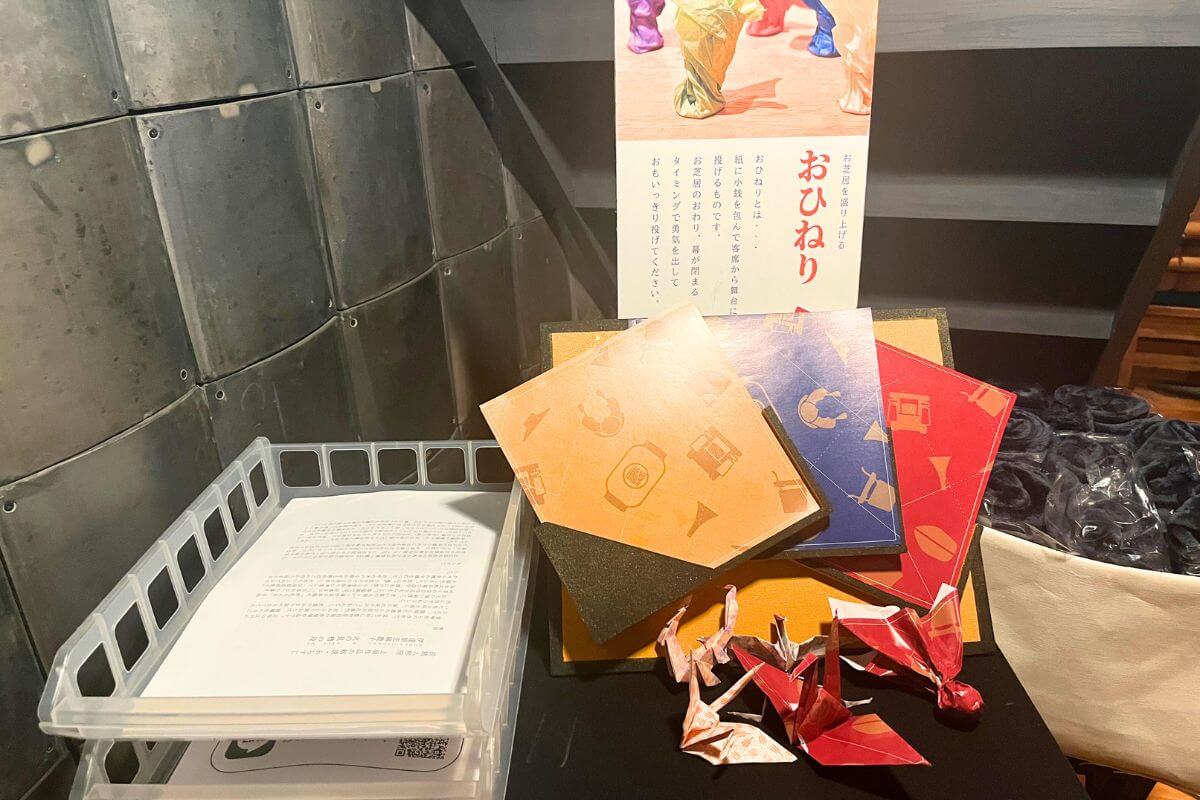
While waiting for the performance to begin, you can view the exhibits at the rear of the theater or prepare your ohineri. Ohineri is similar to a tip, and is a Japanese cultural practice of throwing money wrapped in paper as a token of gratitude after a performance or show. Wrapping paper for ohineri is available at the theater entrance, so please give it a try.

There are also audio guides available in English, Chinese, and Korean for foreign visitors, so you can listen to explanations of the puppet theater, each performance, and synopses before the show starts.
4. Introduction
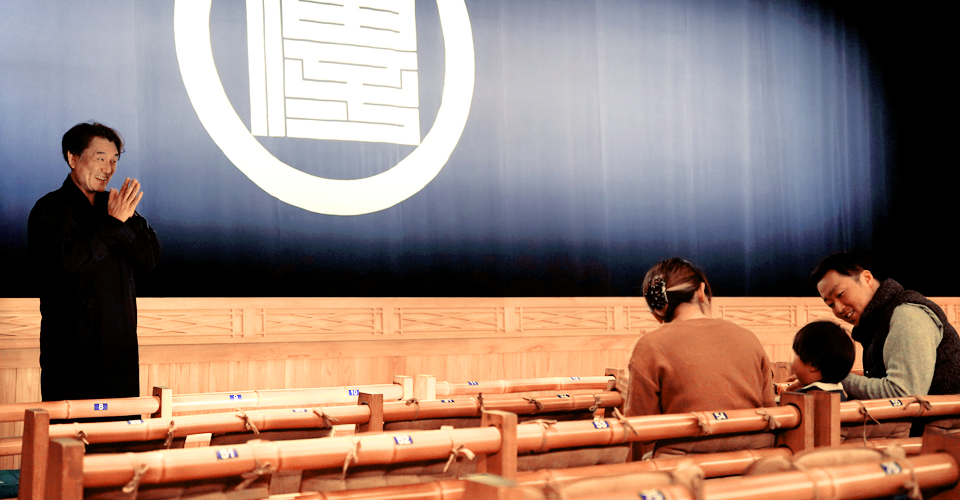
Before the performance begins, the cast members give a pre-show explanation, summarizing the plot and explaining when to applaud and throw money. First, you can applaud whenever you like! As for throwing money, when the curtain closes at the end of the performance, throw it with all your might toward the curtain. They also explained the rules of etiquette, such as no photography during the performance, so be sure to follow them carefully.
5. Curtain up
It’s finally time for the performance of “Yurutto Ningyo Joruri” to begin. This is a new performance that started this year. After listening to explanations about the narrator, shamisen player, and puppeteer of Ningyo Joruri, we will watch a play called “Date Musume Koihiganoko Hinomiyagura no Dan.”
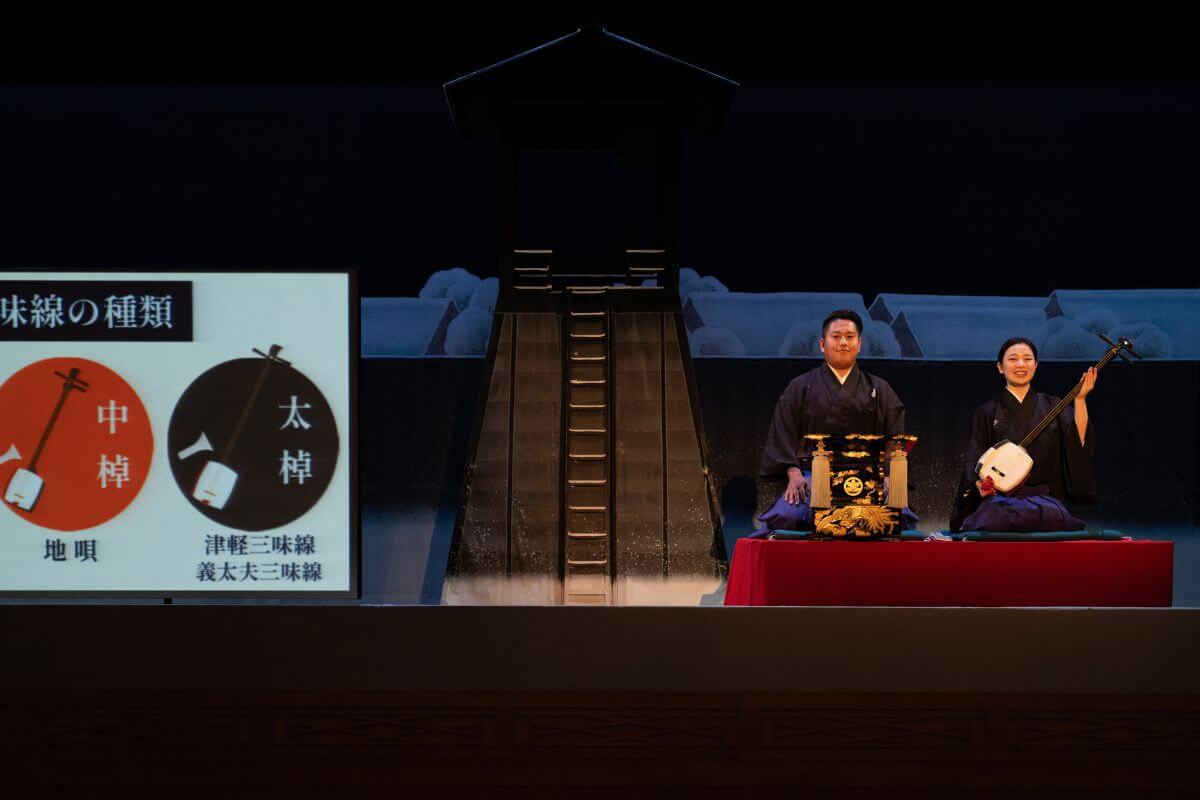
A tayu is someone who narrates the story and the characters’ lines. In anime, it’s like a voice actor or narrator. The difference from anime voice actors is that they play multiple roles and express emotions like joy, anger, sadness, and happiness with a unique intonation. To master the delicate and rich narration of a tayu, you need not only training but also years of experience.
On the other hand, the shamisen leads the narrator in a way that makes it easy for them to speak, and plays a role in expressing the scene and emotions through its tone. The largest type of shamisen, called the “Hutozao shamisen,” is used to create the atmosphere of the story with its low, deep, and powerful sound.
There are also scenes where the audience joins in and experiences the narrator’s storytelling in sync with the shamisen, and I felt that the way of vocalizing and the timing of the narration were very difficult and required skilled craftsmanship.
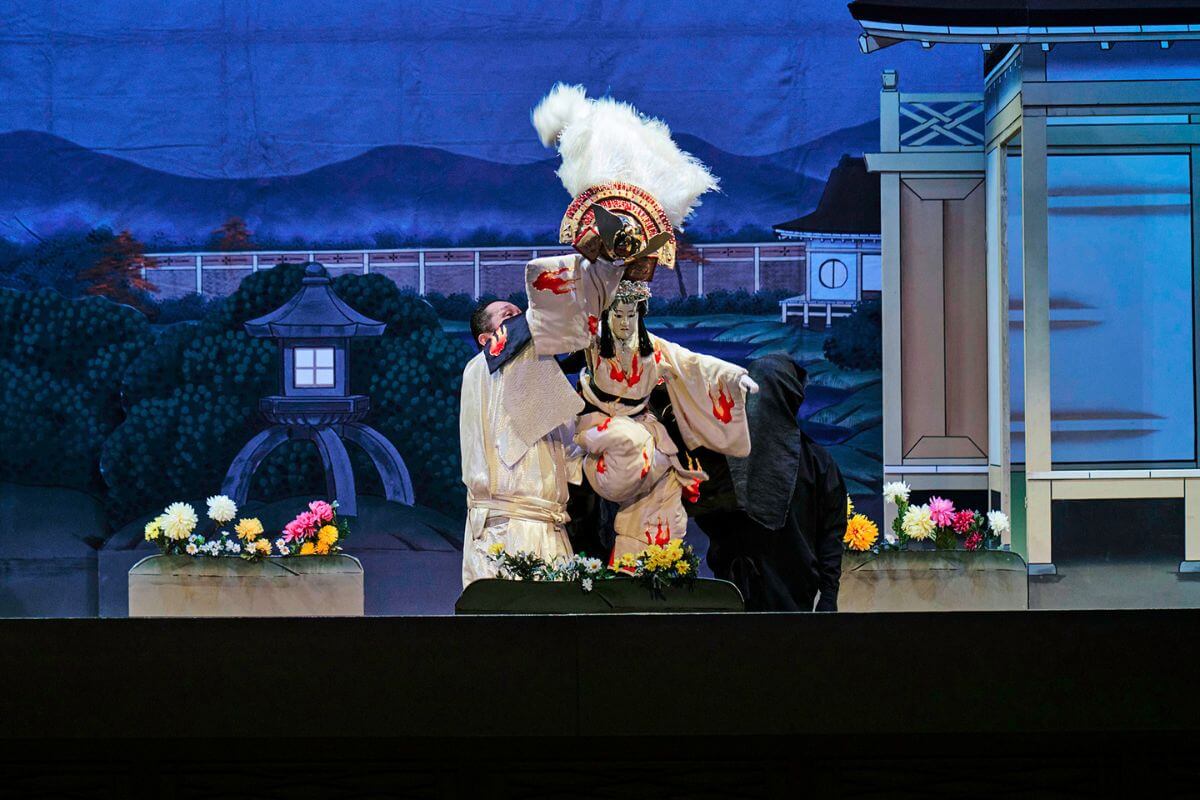
The puppeteers operate each puppet with a team of three. The team is divided into three parts: the “main puppeteer” who controls the head and right hand, the “left puppeteer” who controls the left hand, and the “foot puppeteer” who controls both feet. By perfectly synchronizing their movements and breathing, they breathe life into the puppet. This role requires such skill and expressiveness that it is said, “It takes eight years to master the feet, eight years to master the left hand, and a lifetime to master the head.”
Additionally, since the puppet is the main character on stage, the puppeteers wear black robes and headscarves, performing in all-black attire.
Demonstrating “how women cry.” Rather than imitating how humans cry, the doll cries in a way unique to dolls, giving the impression of a woman crying with a sense of melancholy. This has also been featured in a video on social media.
この投稿をInstagramで見る
After the explanation, the narrator (tayu), shamisen player, and puppeteer (Ningyo Tsukai) performed together. I naturally empathized with the puppets, which moved like humans, and was instantly drawn into the world of Ningyo Joruri. I highly recommend experiencing this moment of being transfixed by the puppets for yourself.
6. Curtain falls
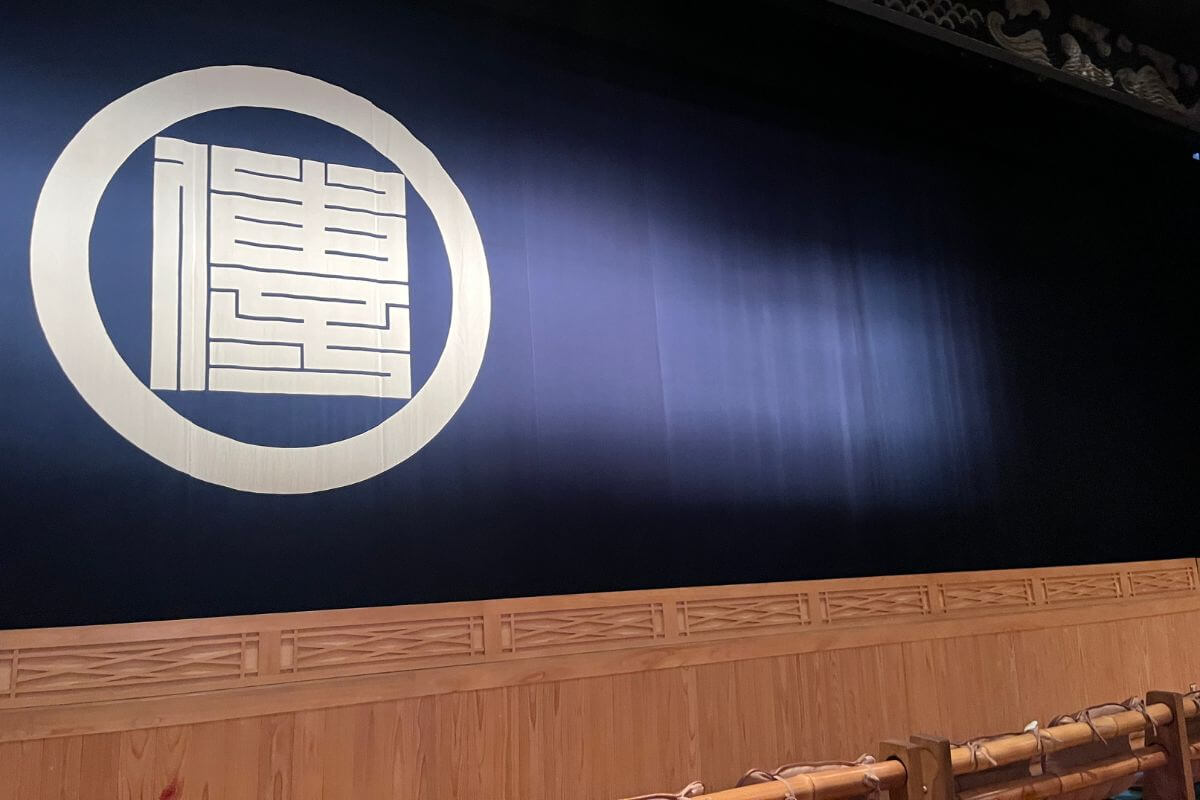
And when the curtain closes at the end of the performance, don’t forget to throw your Ohineri(tips) with all your might! By the way, I didn’t know when to throw them, so I threw them after the curtain closed completely, following the staff’s instructions. Next time, I definitely want to do it right!
7. Photo shooting
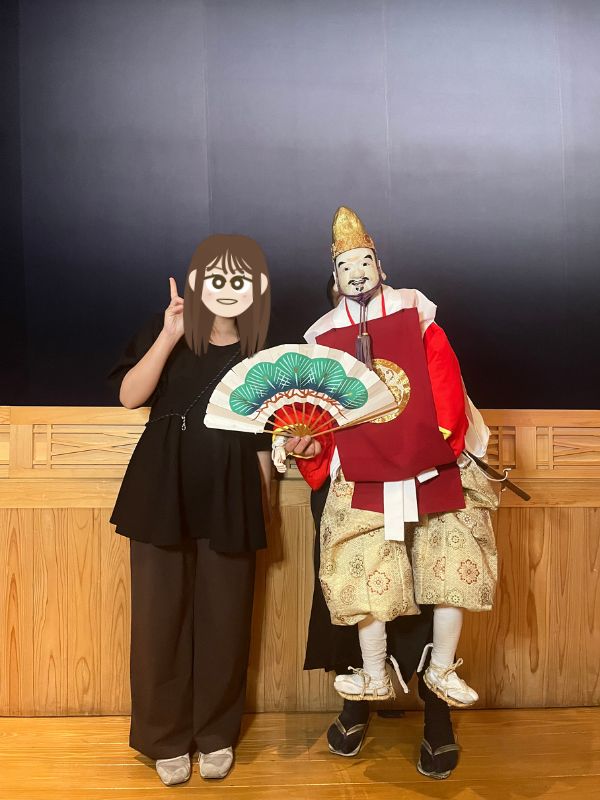
After the performance, you can take a commemorative photo with Ebisu. Ebisu is a god who bestows good fortune, so good things may be in store for you.
8. Buying souvenirs

The shop inside the museum sells original Awaji Ningyoza goods and products unique to Awaji Island. The most popular item is an original product called “Ebessan no Ofukuwake,” which is a tai-shaped egg senbei. Its mild sweetness and crisp texture are irresistible!
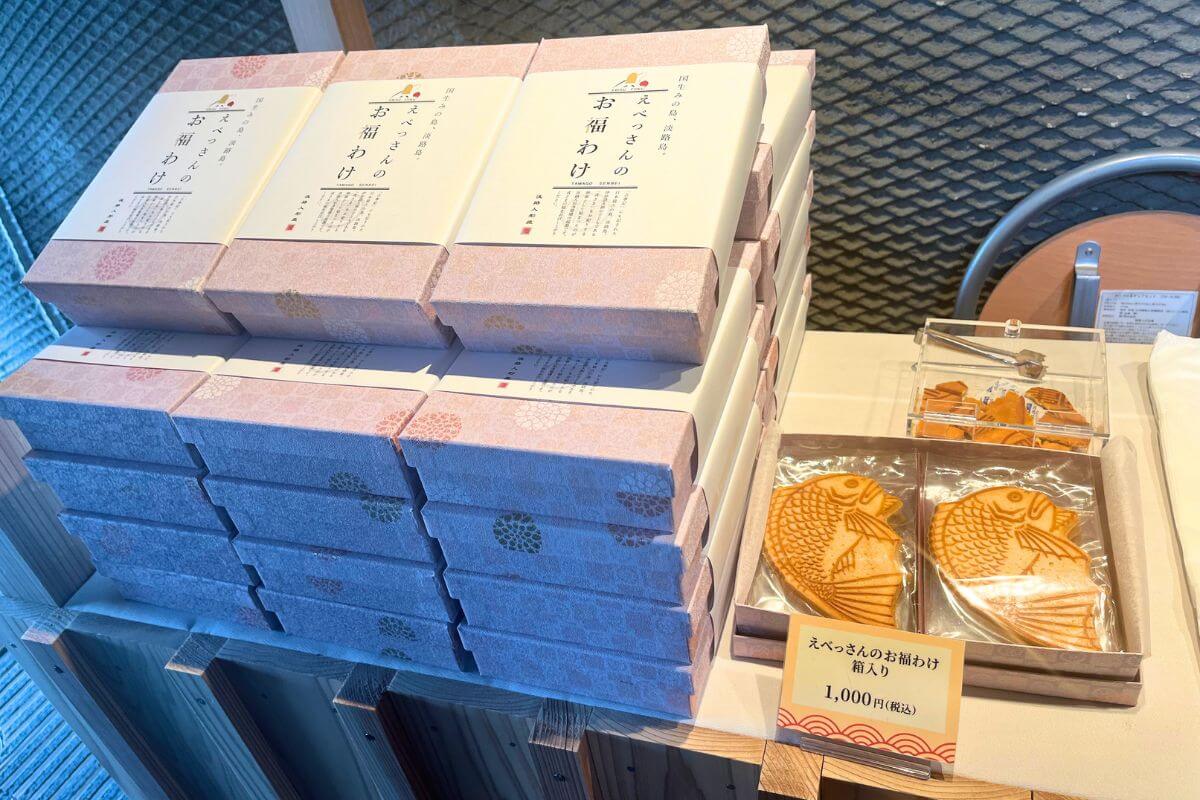
Awaji Nigyo hand towels and happi coats are also very cool and recommended as souvenirs!
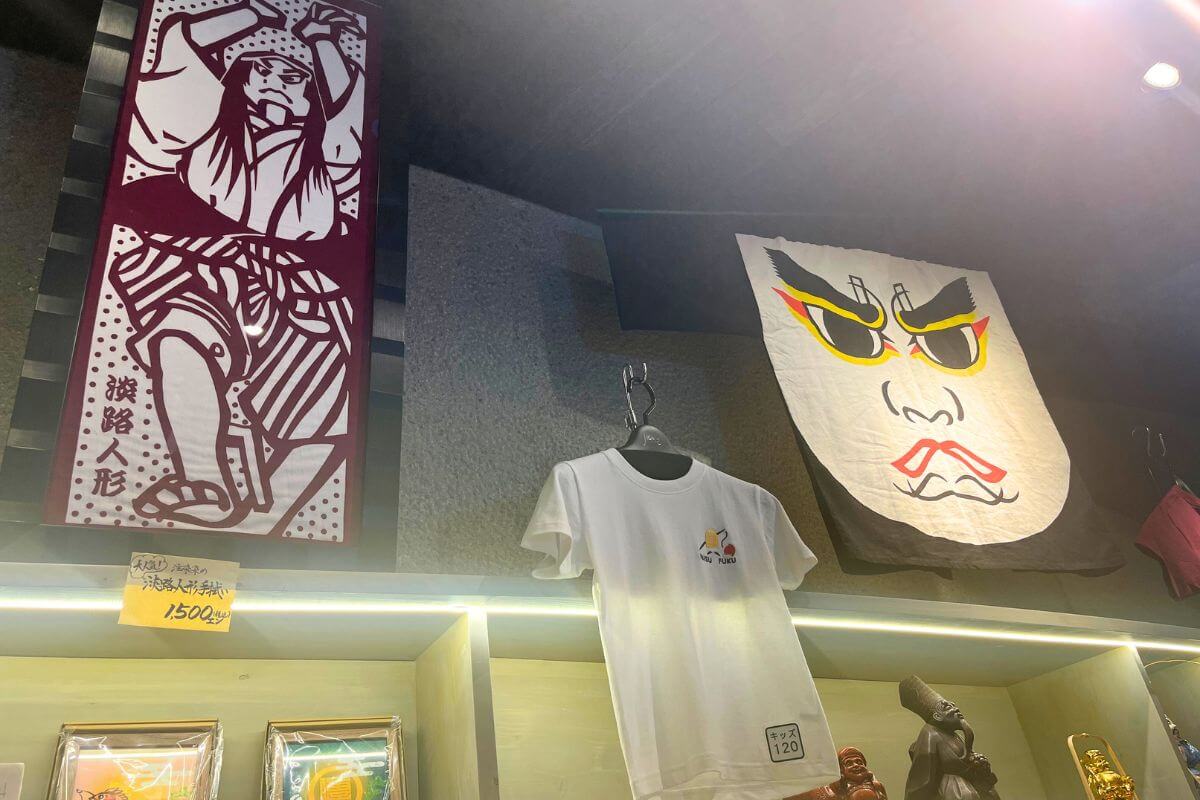
There were also UFO catchers and gachagacha machines with Awaji Ningyoza-exclusive Ebisu-sama and Kuroko stuffed animals.

Why not buy some souvenirs to remember your visit to Awaji Ningyoza?
Experience a Backstage Tour!
I wanted to learn more about Awaji Ningyoza, so I participated in a backstage tour. I was excited and thrilled to have the rare opportunity to go behind the scenes, where I don’t usually get to go.
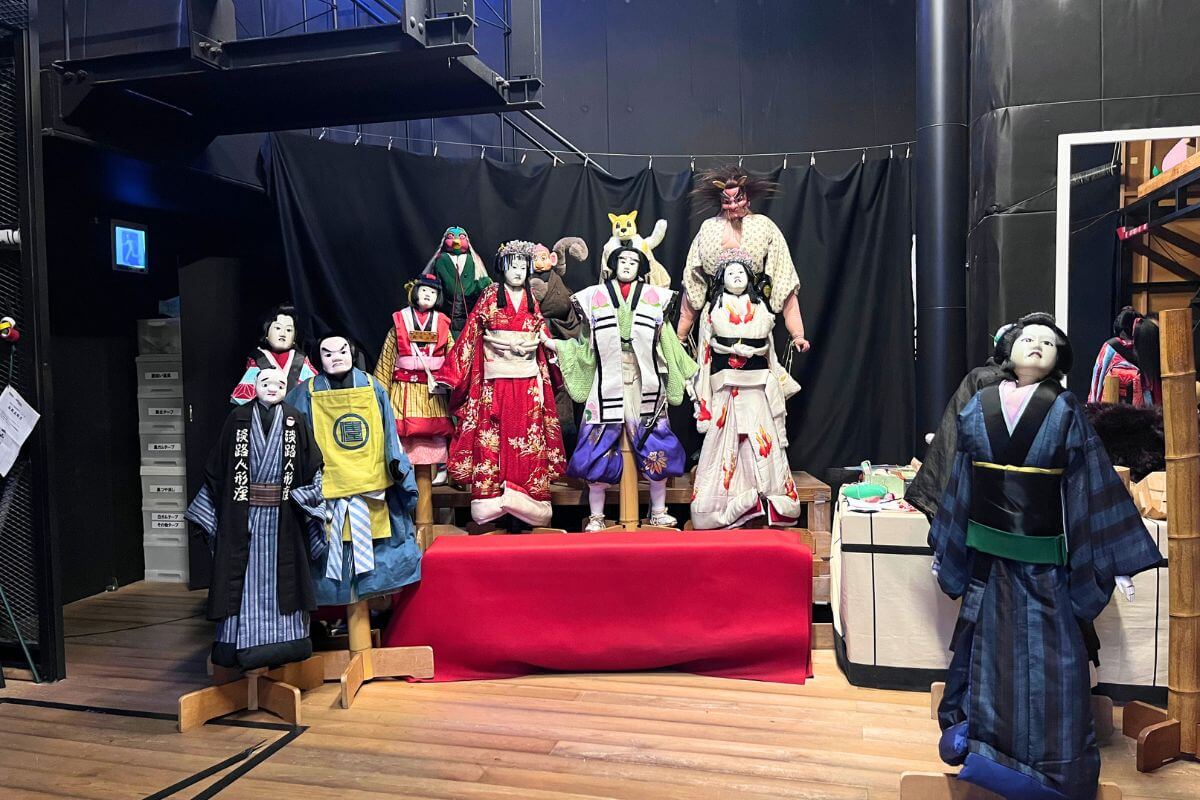
First, there are various dolls lined up in the wings that you can take pictures with. They look bigger than you’d expect when you see them up close! It’s amazing that they are moved by human hands.
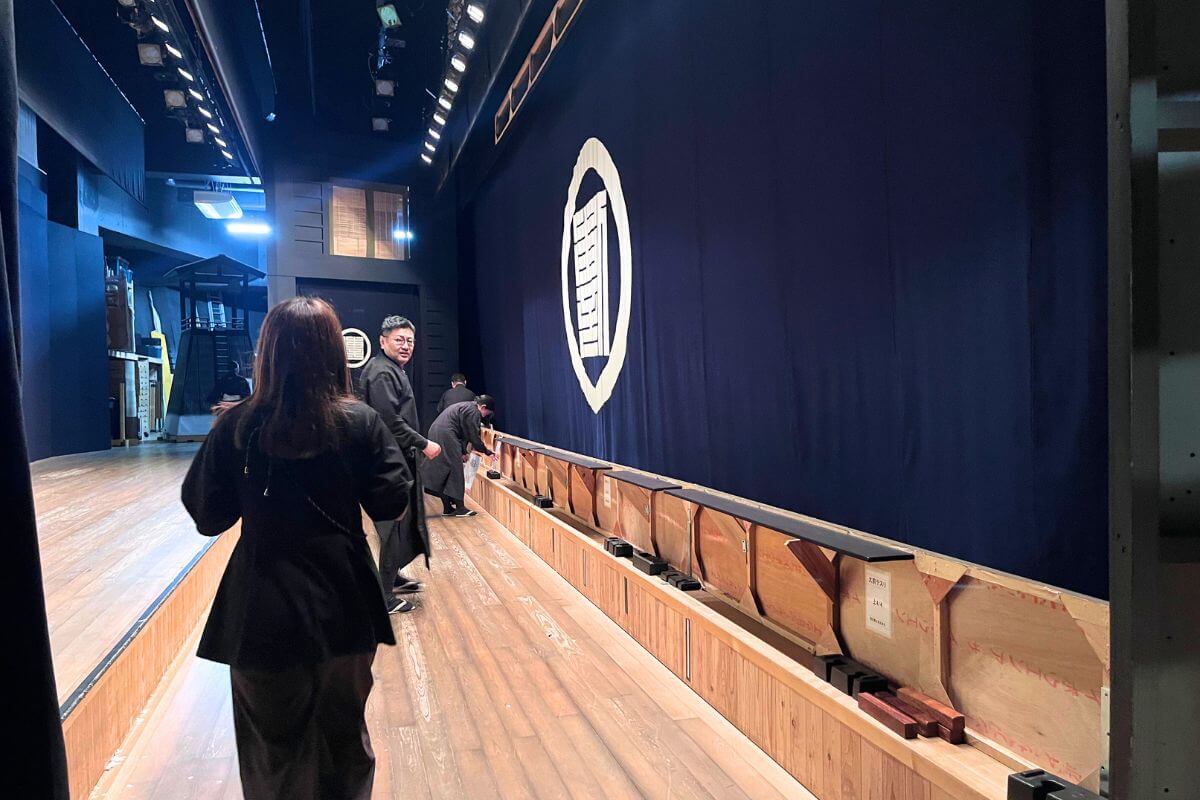
When you go up on stage, you will see that it is constructed in a manner unique to bunraku puppet theater, called a “funazoko Butai” stage. The lower section is called the ‘funazoko’ because it looks like the bottom of a ship, and the partition board that serves as the ground for the puppets is called the “tesuri.” The height from the funado to the tesuri is approximately 84 cm.
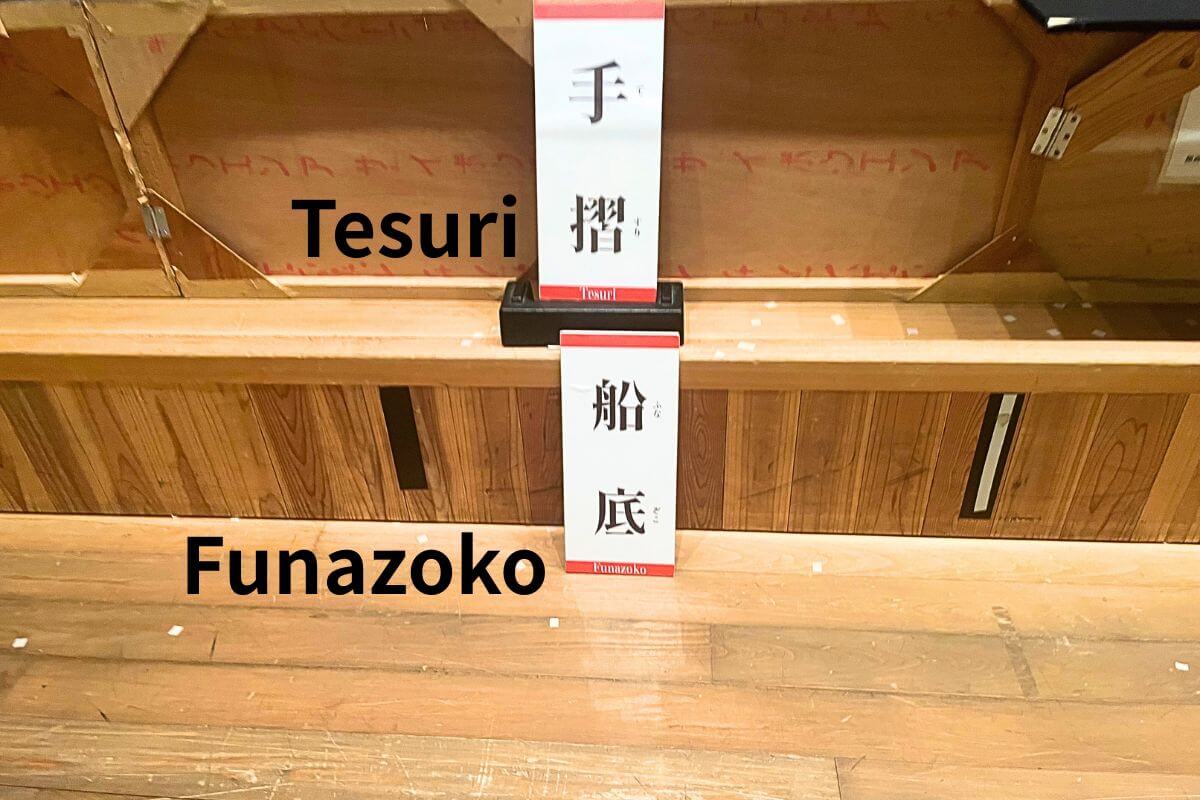
The reason for this unique design is that the main puppeteer wears stage Geta (wooden sandals) so that the three puppeteers can easily operate the puppets. By digging down the stage to create a boat-shaped bottom, the audience can see the puppets at eye level.
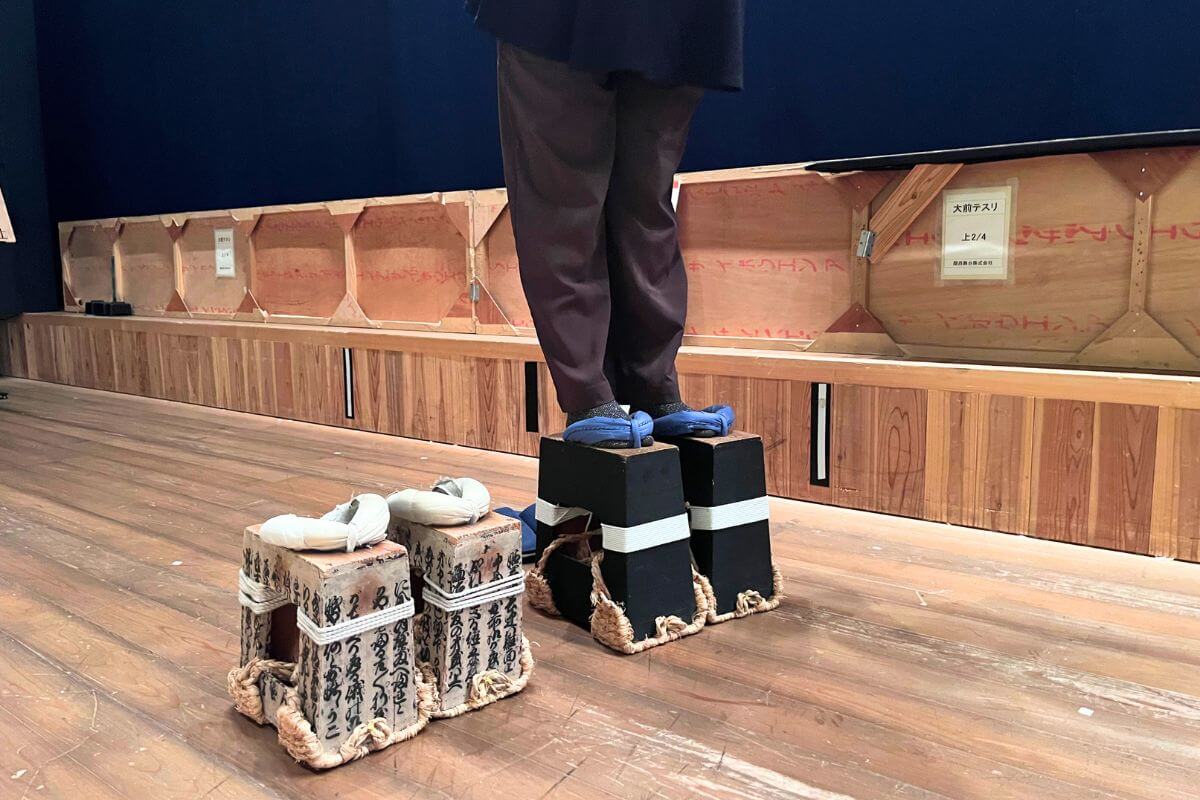
The stage Getas worn by the puppeteers are 20 to 50 cm high, and when you actually wear them, you’ll be surprised at how high they are! I realized that it takes a lot of physical strength to operate the puppets while wearing these clogs.
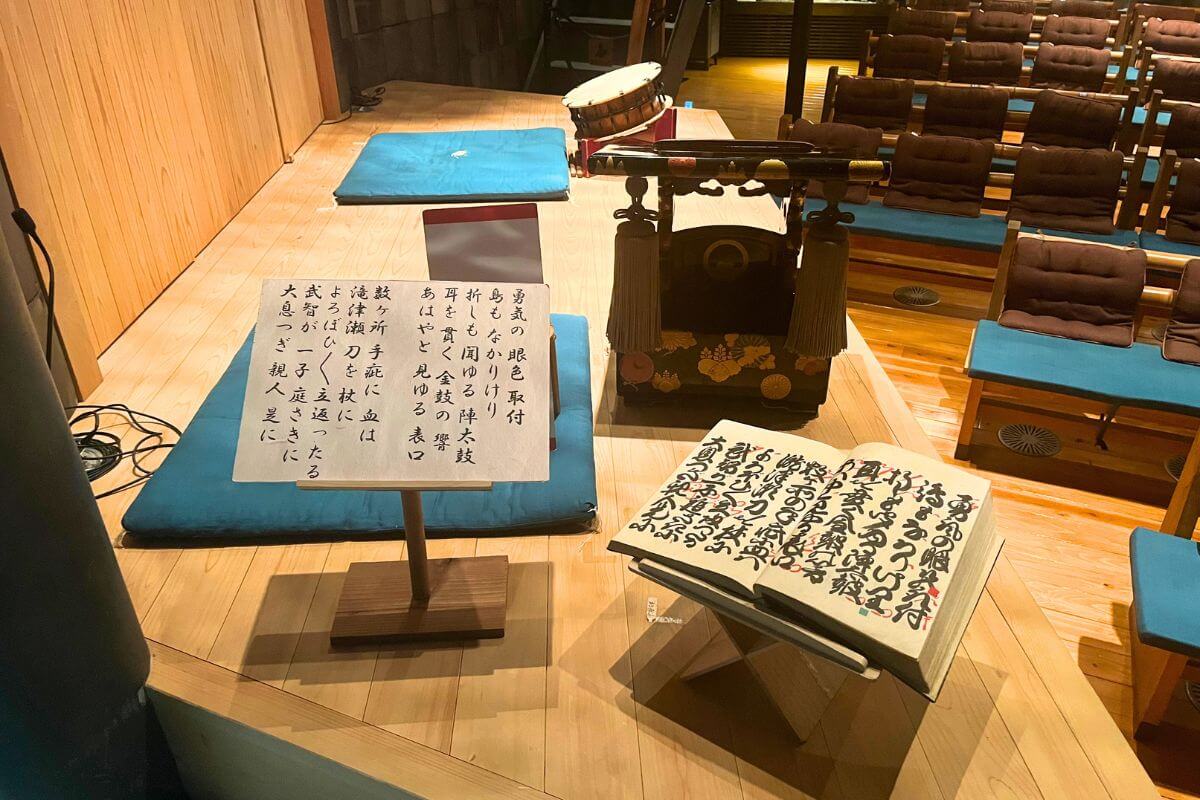
This is the “Yuka” where the Tayu and Shamisen perform. The script that the Tayu recites is called a “Yukabon,” and it is written in a unique, twisted handwriting that is impossible for amateurs to decipher.
It is said that the tayu’s training begins with learning to read this joruri script.
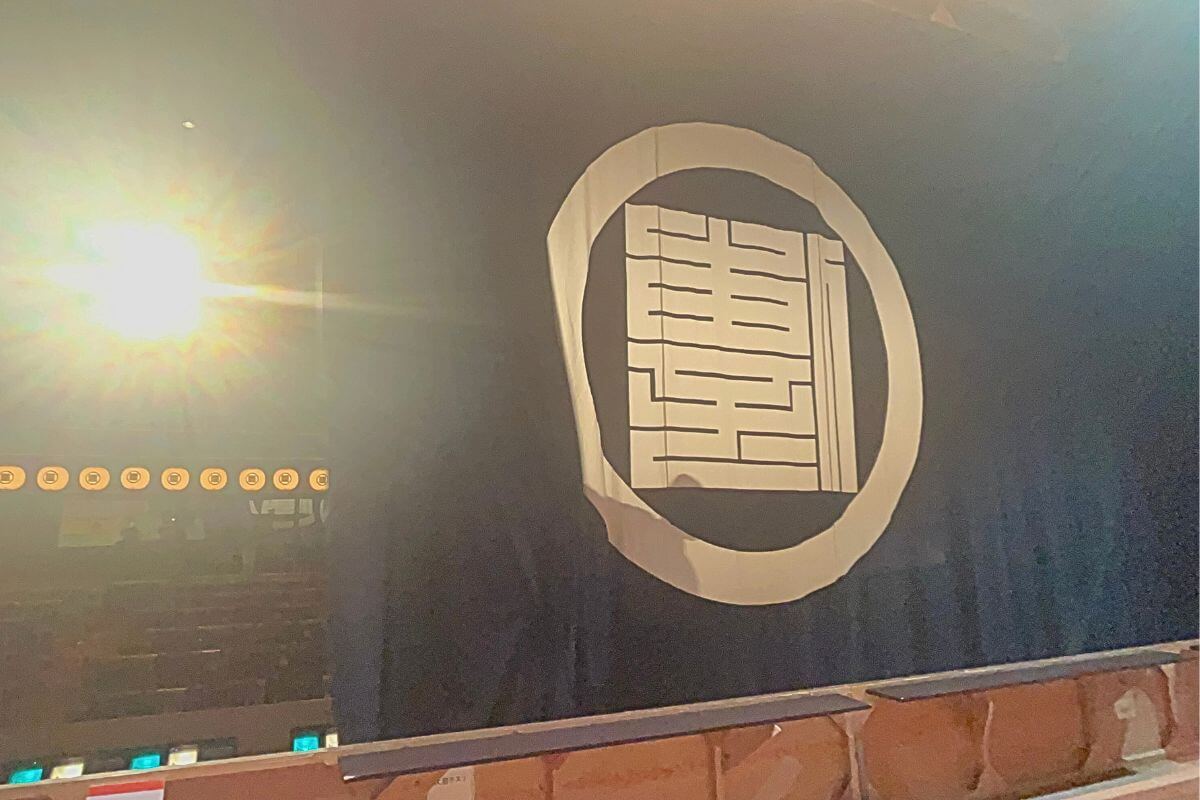
Then, the curtain with the Awaji Ningyoza logo “傳Den” opened, and I had the rare opportunity to see the audience from the stage.
By participating in the backstage tour, I was able to learn a little about the profound world of Ningyo Joruri, which made me even more interested in it. Once you know what goes on behind the scenes, you can enjoy Ningyo Joruri even more, so I highly recommend participating in the backstage tour.
▼Click here for the Awaji Ningyoza official website reservation page.
https://awajiningyoza.com/en/reserve/
*Viewing is possible without advance reservations.
Enjoy Awaji Ningyoza and Awaji Island!
Living in Japan, I had never heard of the world of Ningyo Joruri (puppet theater) before.
I was captivated by the beautiful movements of the puppets, which moved as if they were real people, in time with the music played by the tayu (narrator) and shamisen players of Ningyo Joruri.
The charm of Awaji Ningyo Joruri lies in the fact that even if you don’t understand the language, you can still grasp the emotions of joy, anger, sorrow, and happiness through the puppets’ gestures and expressions. I believe it is a traditional performing art that can be enjoyed by people from overseas who don’t understand Japanese, transcending language barriers. Additionally, the members of the troupe are very friendly and kind, overflowing with love for Ningyo Joruri.
If you want to experience Japanese traditional performing arts up close, I highly recommend visiting the Awaji Ningyo Joruri Theater!
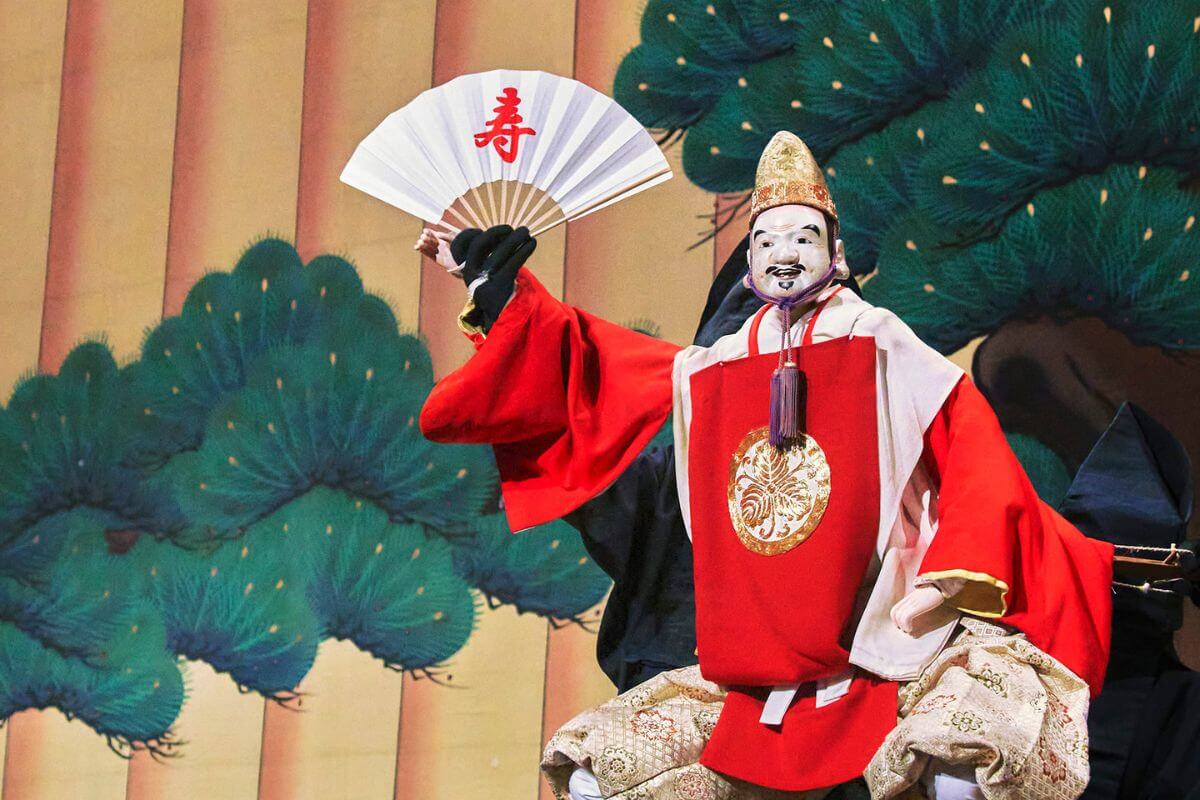
Awaji Island offers not only traditional performing arts, but also gourmet food and spectacular views.
We recommend visiting the Uzu no Oka Onaruto Bridge Memorial Hall and Roadside Station Uzushio, located about 15 minutes by car or taxi from Awaji Ningyoza.
Enjoy Awaji Island to the fullest by tasting its onions and seafood, taking photos at photo spots overlooking the Onaruto Bridge and Naruto Strait, and more!
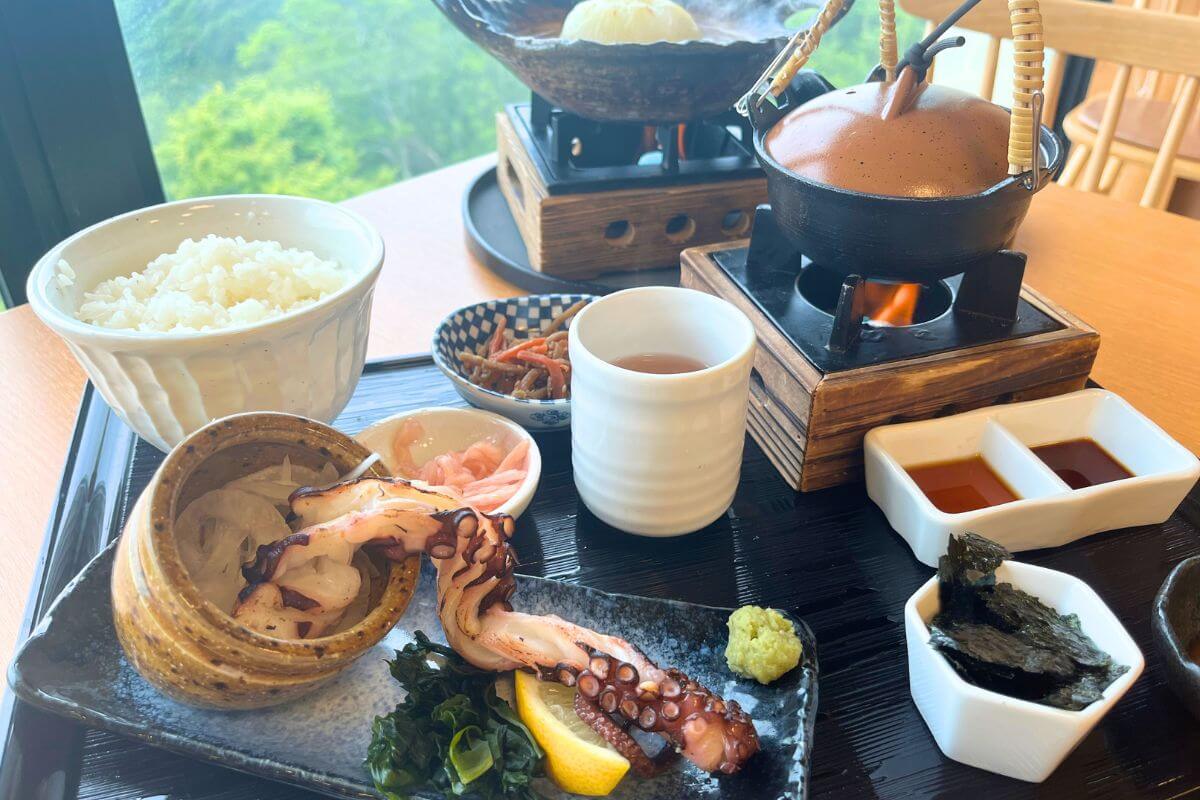
▲Awaji Island cuisine at the restaurant in the Uzu no Oka Onaruto Bridge Memorial
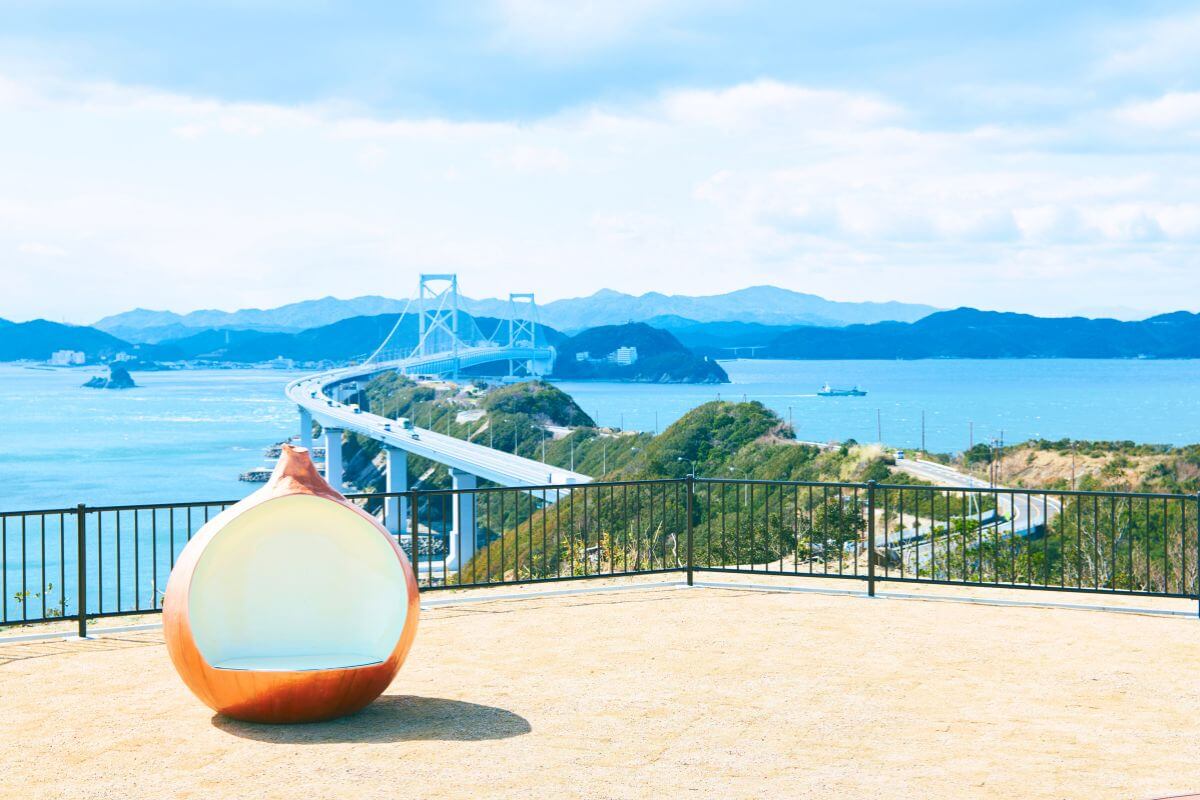
▲Spectacular view from Roadside Station Uzushio
In the second installment of our series on notable spots in Minami-Awaji City, we will introduce the charms of Uzu no Oka Onaruto Bridge Memorial , so please look forward to it!
Details about Awaji Ningyoza
Building Name: Awaji Ningyo Joruri Kan
Address: 1528-1 Fukura-ko, Minami-Awaji City, Hyogo Prefecture 656-0501
Phone Number: 0799-52-0260
Hours: 9:00 AM to 5:00 PM
Performance Times: 4 times a day (10:00 AM, 11:10 AM, 1:30 PM, and 3:00 PM, each lasting 50 minutes)
For groups of 30 or more, special performances are available at 9:00 AM and 4:00 PM.
* Advance reservations are required at least 15 days in advance for special performances.
Closed: Every Wednesday and year-end holidays.
* If Wednesday is a national holiday, the museum will be closed the following day.
* Please note that there may be changes to the above information, so please inquire before visiting.
Admission (tax included):
| Private customer | Group Discounts 15 or more |
Group Discounts 100 or more |
Disability fee (for the person with disabilities only) *A certificate of identification is required. | |
| Adult | 1,800 yen | 1,620 yen | 1,440 yen | 900 yen |
| Junior high and high school students | 1,300 yen | 1,170 yen | 1,040 yen | 650 yen |
| Elementary school student | 1,000 yen | 900 yen | 800 yen | 500 yen |
| Infant | free | free | free | free |
Access:
From the nearest express bus stop, Fukura, it is a 1-minute walk.
From the nearest interchange, Awajishima Minami IC, it is approximately 6.7 km to Awaji Ningyoza, which takes about 11 minutes by car.
From the nearest interchange, Awajishima Seidan Mihara IC, it is approximately 7.9 km to Awaji Ningyoza, which takes about 15 minutes by car.
Official website: https://awajiningyoza.com/en/
Official Social Media:
YouTube https://www.youtube.com/@awaji_ningyoza
Instagram https://www.instagram.com/awaji_ningyoza/
TikTok https://www.tiktok.com/@awajiningyoza
Facebook https://www.facebook.com/awajiningyo
X https://x.com/Awajiningyoza
